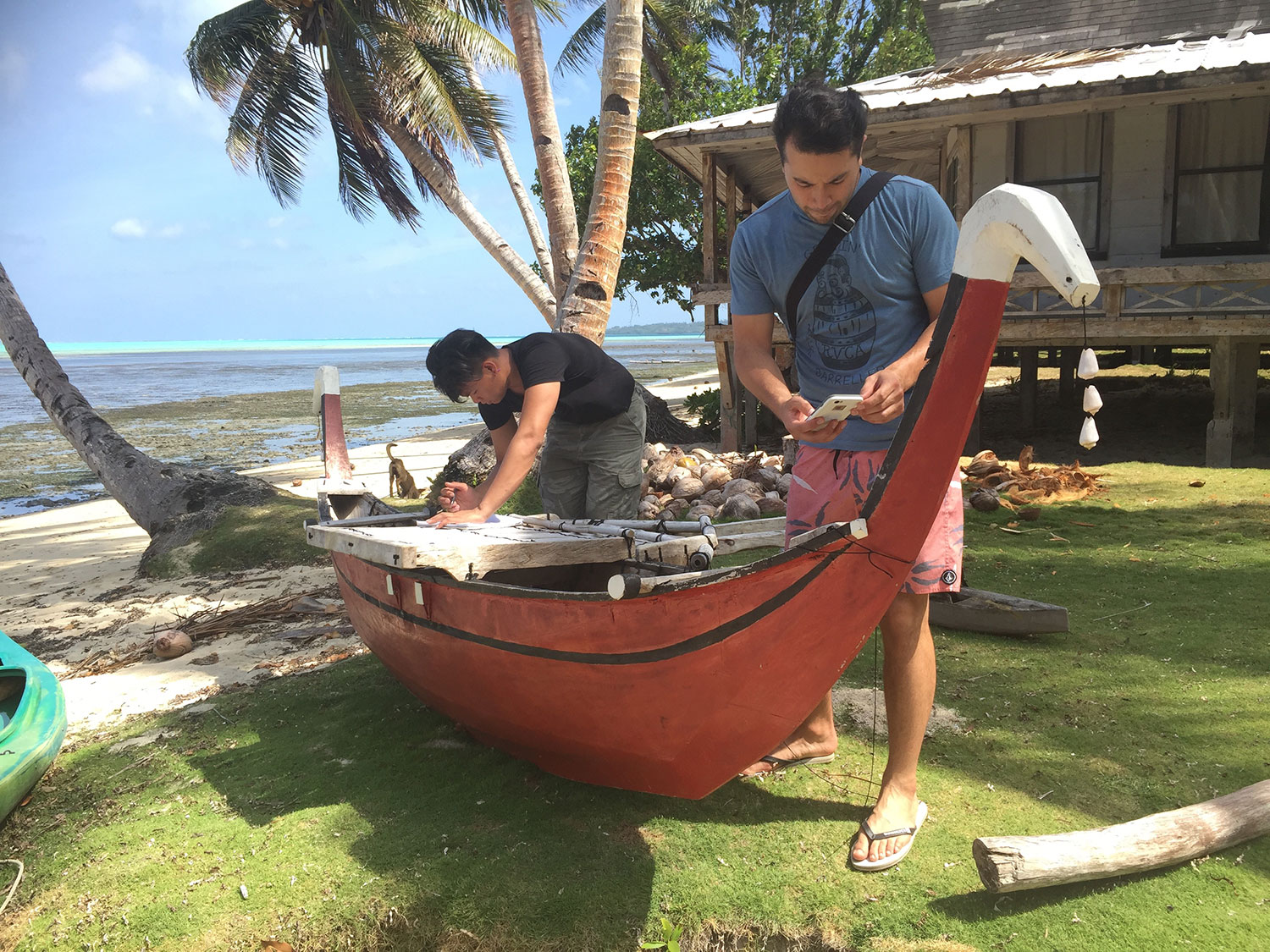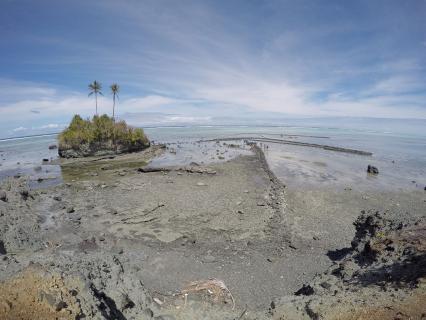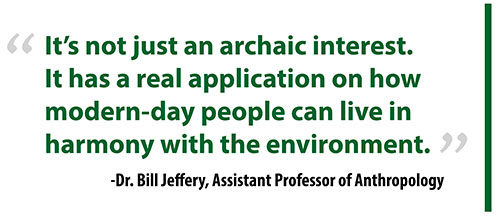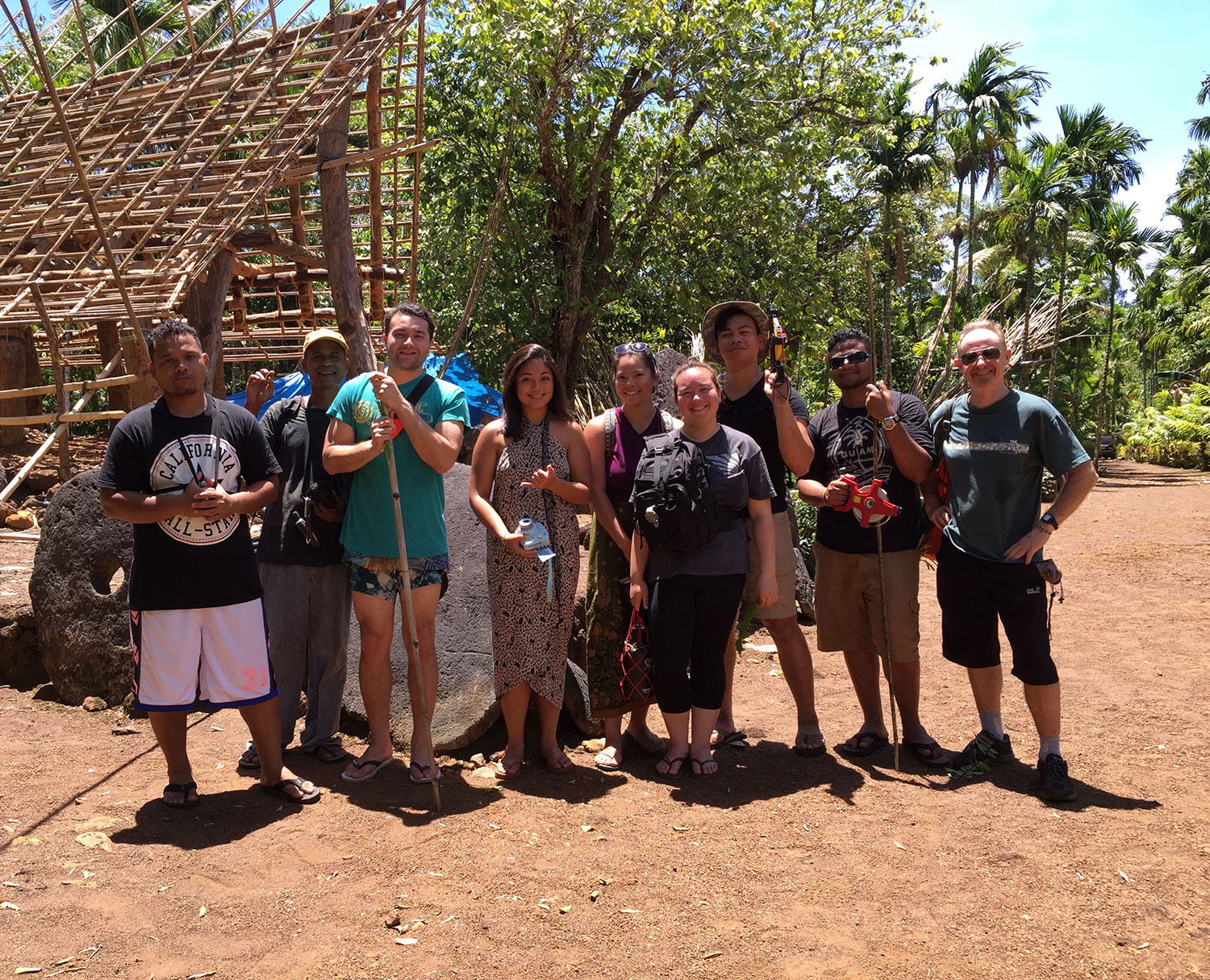Student Spotlights
Student Spotlight
Student Spotlights
2/1/2018
UOG Empowers Future Anthropologists
 Rico DelaCruz-Roldan (left) and Danton Cruz record traditional canoes in Maap.
Rico DelaCruz-Roldan (left) and Danton Cruz record traditional canoes in Maap.
Six Anthropology Students Experience Hands-on Fieldwork in Yap Over Spring Break
Strapping a snorkel to her face, Brittany Toves jumped into the water to join her
classmates.
Taking note of the length, shape, and construction, she’d resurface to jot down details
of the nearby fish weirs (aech), a traditional Yapese structure used to strategically and sustainably catch fish.
“We analyzed how it was structured and where the opening is,” said the senior anthropology
major. “We snorkeled around and had to sketch it out.”
This fishing method served as the focus of the first of three hands-on field research
projects conducted on the island of Yap by six University of Guam anthropology majors.
The other two projects consisted of mapping out the pathway to the Mangyol stone money
bank and studying the carving and use of traditional Yapese canoes.
Led by Assistant Professor Dr. Bill Jeffery on a 10-day trip last spring, the students
broke into teams of two to conduct fieldwork on the traditional cultural heritage
of Yap in collaboration with the Yap State Historic Preservation Office. Two arrow shaped aech in Maap municipality.
Two arrow shaped aech in Maap municipality.
Fish Weirs
Toves and her partner senior Danton Cruz spent the majority of their time taking
measurements of nine aech around Yap proper. Working with the tide, the aech corral and trap the fish, while allowing people to release what’s not needed, Toves
said.
Around eight years ago, Jeffery—who has worked as a maritime archeologist for more
than a decade—spent nearly five months studying Yap’s aech alongside the Federated State of Micronesia Historic Preservation Office. The people
of Yap have been hoping to revive the fishing practice. While still on that journey,
they continue to learn best practices in constructing new aech while maintaining the old ones, Jeffery said.
“It’s not just an archaic interest,” he said. “It has a real application on how modern-day
people can live more in harmony with the environment.”
Stone Money Bank
Senior Angelina Pangelinan and her partner senior Chelsey Murphy helped map out the
pathway of the Mangyol stone money bank, which is considered the most traditional
stone money bank in Yap, Jeffery said.
This site also has recently been nominated for inclusion in the United Nations Education,
Scientific, and Cultural Organization (UNESCO) World Heritage Site, and work the UOG
students completed will help that come to fruition, Jeffery said.
More than 30,000 round, limestone disks, which can be longer than 10 feet in diameter,
can be found in 200 stone money banks in 134 villages throughout the island. And the
better the story, the more valuable to money becomes.
“The ‘value’ of the stone money is not in its size but in the associated stories
and hardships in acquiring it,” Jeffery said.
Canoes
Seeing the sheer size of one of the traditional Yapese canoes, senior McMichael Mutok
immediately thought of the canoes built on his home island of Palau.
“In Palau, we usually build canoes for war and transportation, and some are on display
for tourists,” he said. “In Yap, they build canoes three to four times bigger than
Palauan canoes.”
While he and his partner senior Rico DelaCruz-Roldan studied the size and shape of
traditional Yapese canoes, they also learned first-hand the techniques used to make
them.
“We carved a piece of the hull and documented the techniques of gluing, sculpting
and construction of a canoe, which was overseen by a master carver,” DelaCruz-Roldan
said.
Empowering Local Anthropologists
Participating in anthropological fieldwork in Micronesia meant something special
to Toves, who said having someone from the region studying Micronesia would bring
a new perspective to anthropology.
“What would be great to have is someone from Guam studying Guam,” she said. “Even
though it sounds like a little thing for someone not from Guam, it’s a lot different
when you’re trying to apply your knowledge in a place that you know and understand.”
For more information on the anthropology degree program at UOG, visit http://www.uog.eduhttps://catalog.uog.edu/current/programs/college-of-liberal-arts-and-social-sciences/anthropology
 From left to right: Yap State Historic Preservation Office Representatives Clement
Mohoral and Joey Yinmed, Danton Cruz, Angelina Pangelinan, Chelsey Murphy, Brittany
Toves, Rico DelaCruz-Roldan, McMichael Mutok, and Assistant Professor of Anthropology
Dr. Bill Jeffery stand near the Mangyol stone money site.
From left to right: Yap State Historic Preservation Office Representatives Clement
Mohoral and Joey Yinmed, Danton Cruz, Angelina Pangelinan, Chelsey Murphy, Brittany
Toves, Rico DelaCruz-Roldan, McMichael Mutok, and Assistant Professor of Anthropology
Dr. Bill Jeffery stand near the Mangyol stone money site.
